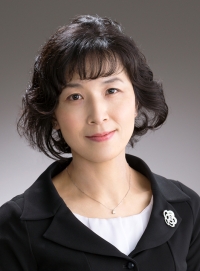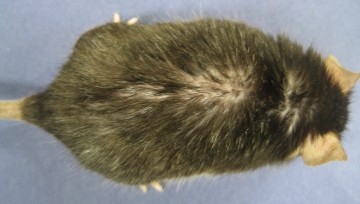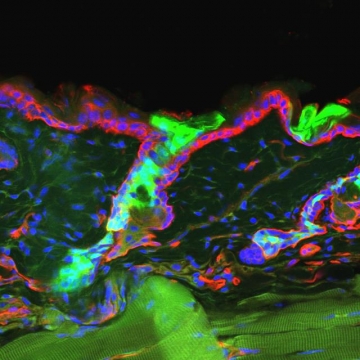Stem cell aging study for tissue regeneration

Emi Nishimura,
Professor of Stem Cell Biology
In aging societies, it is crucial to understand the mechanisms of physiological aging and the basis for aging-associated diseases. Stem cell systems play fundamental roles in the homeostatic maintenance of many tissues and organs. I did my dermatology residency at Kyoto University Hospital and earned my Ph.D. at Kyoto University, studying melanocyte (pigment cell) development. We subsequently identified melanocyte stem cells as reservoirs for melanocytes in skin and hair follicles (1), and then revealed that aging-associated depletion of the population results in graying hair (2). The study clearly indicated that the aging of stem cells is a key to understanding tissue and organ aging.
Since establishing my own research team as a Professor at Kanazawa University in 2006 and then at TMDU in 2009, we started working on the niche microenvironment of stem cells and have revealed that hair follicle stem cells function as “niche cells” for melanocyte stem cells (3). We also have found the existence of a “stemness checkpoint”, which determines the fate of somatic stem cells, namely whether stem cells stay in an immature state as stem cells or commit to differentiation, during aging and under genomic stress (4).
More recently, we have been focusing on the in vivo cellular dynamics and exact changes that occur in somatic stem cells during aging and the eventual fate of those stem cells in tissues and organs. Our approach has revealed the existence of a “stem cell-centric aging program” that governs tissue aging characterized by miniaturization of hair follicle, the mini-organ to grow hair and hair loss (senescent alopecia) (5). This helps explain why and how organs in our bodies become smaller (miniaturize) and/or thinner, with associated functional decline, due to aging. We are devising new strategies for tissue regeneration and rejuvenation by focusing on somatic stem cells. We welcome international collaboration to realize the therapeutic potential in this area.
Journal Information
Nature, doi: 10.1038/416854a
2) Mechanisms of Hair Graying: Incomplete Melanocyte Stem Cell Maintenance in the Niche,
Science, doi:10.1126/science. 1099593
3) Hair follicle stem cells provide a functional niche for melanocyte stem cells,
Cell Stem Cell, doi: 10.1016/j.stem.2010.11.029
4) Genotoxic stress abrogates renewal of melanocyte stem cells by triggering their differentiation,
Cell, doi: 10.1016/j.cell.2009.03.037
5) Hair follicle aging is driven by transepidermal elimination of stem cells via COL17A1 proteolysis,
Science, doi: 10.1126/science.aad4395

Diffuse hair loss radially extends with aging. Shown is a 28-month-old wild-type mouse(C57BL/6N).

Hair follicle stem cell (HFSC) -derived cells were genetically tagged withby green fluorescent protein to trace the fate of HFSCs during aging. Shown areis the aged HFSC-derived cells (green) that are terminally differentiating into epidermal keratinocytes to be eliminated from the skin surface as dandruff.

